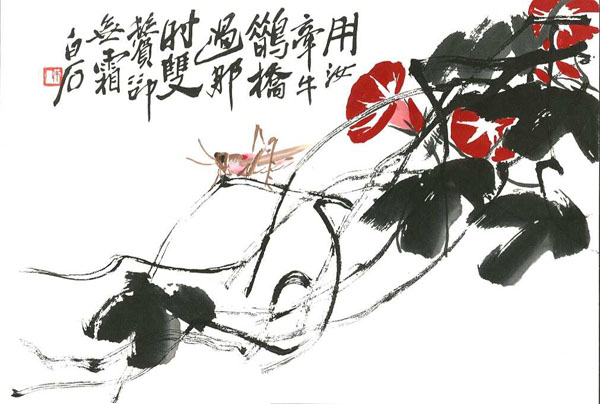Born to a peasant from Xiangtan, Hunan, Qi became a carpenter at 14, and learned to paint by himself. After he turned 40, he travelled, visiting famous scenic spots in China. After 1917 he settled in Beijing. In his later years, he continued to make "later-year innovations."
He is perhaps the most noted contemporary Chinese painter for the whimsical, often playful style of his watercolor works.
His pseudonyms include Qí Huáng (齊璜) and Qí Wèiqīng (齐渭清). The subjects of his paintings include almost everything, commonly animals, scenery, figures, toys, vegetables, and so on. He theorized that "paintings must be something between likeness and unlikeness, much like today's vulgarians, but not like to cheat popular people". In his later years, many of his works depict mice, shrimp, or birds.
He was also good at seal carving and called himself "the fortune of three hundred stone seals".
In 1953 he was elected to the president of the Association of Chinese Artists. He died in Beijing in 1957.








